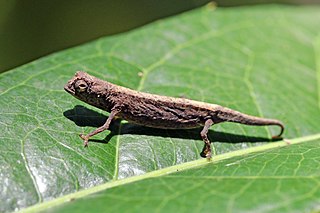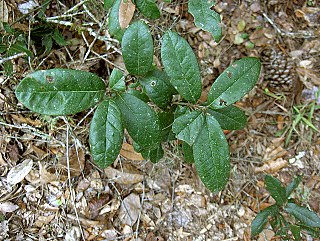
In mathematical analysis, the maxima and minima of a function, known collectively as extrema, are the largest and smallest value of the function, either within a given range or on the entire domain of a function. Pierre de Fermat was one of the first mathematicians to propose a general technique, adequality, for finding the maxima and minima of functions.

The crimson-backed sunbird or small sunbird is a sunbird endemic to the Western Ghats of India. Like other sunbirds, they feed mainly on nectar although they take insects, especially to feed their young. They are tiny birds that are resident and are found in forests but are particularly attracted to gardens at the edge of the forest where people grow suitable flower-bearing plants. They usually perch while taking nectar.

Solar minimum is the period of least solar activity in the 11 year solar cycle of the Sun. During this time, sunspot and solar flare activity diminishes, and often does not occur for days at a time. The date of the minimum is described by a smoothed average over 12 months of sunspot activity, so identifying the date of the solar minimum usually can only happen 6 months after the minimum takes place. Solar minima are not generally correlated with changes in climate but recent studies have shown a correlation with regional weather patterns.
Instrument meteorological conditions (IMC) is an aviation flight category that describes weather conditions that require pilots to fly primarily by reference to instruments, and therefore under instrument flight rules (IFR), rather than by outside visual references under visual flight rules (VFR). Typically, this means flying in cloudy or bad weather. Pilots sometimes train to fly in these conditions with the aid of products like Foggles, specialized glasses that restrict outside vision, forcing the student to rely on instrument indications only.

Minima Moralia: Reflections From Damaged Life is a 1951 book by the philosopher Theodor W. Adorno and a seminal text in critical theory. Adorno started writing it during World War II, in 1944, while he lived as an exile in America, and completed it in 1949. It was originally written for the fiftieth birthday of his friend and collaborator Max Horkheimer, who had co-authored the earlier book Dialectic of Enlightenment with Adorno.
Minima, Burkina Faso is a village in the Zimtenga Department of Bam Province in northern-central Burkina Faso. It has a population of 829.

Brookesia minima, (common names of which include the dwarf chameleon, the Madagascan dwarf chameleon, the minute leaf chameleon, and the Nosy Be pygmy leaf chameleon, is a diminutive chameleon that was regarded as the smallest lizard of the Chamaeleonidae until a smaller species, B. micra, was described in 2012.

Quercus minima, the dwarf live oak or minimal oak, is a North American species of shrubs in the beech family. It is native to the southeastern United States.
Minima naturalia were theorized by Aristotle as the smallest parts into which a homogeneous natural substance could be divided and still retain its essential character. In this context, "nature" means formal nature. Thus, "natural minimum" may be taken to mean "formal minimum": the minimum amount of matter necessary to instantiate a certain form.

Clovelly is a suburb in the Cape Peninsula area of Cape Town in South Africa.

Sybra is a genus of beetles in the family Cerambycidae, containing the following species:
Sybra iconica is a species of beetle in the family Cerambycidae. It was described by Pascoe in 1865. It contains two subspecies, Sybra iconica clarevitticollis and Sybra iconica iconica.

Sybra umbratica is a species of beetle in the family Cerambycidae. It was described by Pascoe in 1865.
Sybra uenoi is a species of beetle in the family Cerambycidae. It was described by Hayashi in 1956. It is known from Japan.
Sybra bioculata is a species of beetle in the family Cerambycidae. It was described by Pic in 1925. It contains four subspecies: Sybra bioculata bioculata, Sybra bioculata quadrinotata, Sybra bioculata sikkimana, and Sybra bioculata tigrina.
Sybra mimogeminata is a species of beetle in the family Cerambycidae. It was described by Breuning and Ohbayashi in 1964. It contains two subspecies, Sybra mimogeminata carinatipennis and Sybra mimogeminata mimogeminata.

Sybra ordinata is a species of beetle in the family Cerambycidae. It was described by Bates in 1873.
Sybra pascoei is a species of beetle in the family Cerambycidae. It was described by Lameere in 1893.
Sybra subfasciata is a species of beetle in the family Cerambycidae. It was described by Bates in 1884.
Nepenthes minima is a tropical pitcher plant native to Central Sulawesi, Indonesia. It grows in seasonally dry grasslands at elevations of 1000–1700 m above sea level, and has a number of adaptations to survive wildfires. It is the only pyrophytic Nepenthes species known from outside Indochina and the Philippines.











